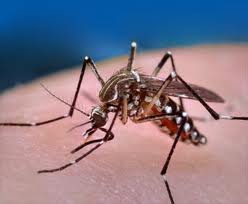Drowning
Posted by Sara Fazio • May 31st, 2012
NOW@NEJM
In many areas of the world, drowning is a leading cause of death, especially among young children. The latest review in our Current Concepts series describes the pathophysiology of drowning and summarizes the principles of resuscitation, prehospital treatment, and intensive care.
According to the World Health Organization, 0.7% of all deaths worldwide — or more than 500,000 deaths each year — are due to unintentional drowning. Since all cases of fatal drowning are not classified as such according to the codes of the International Classification of Disease, this number underestimates the real figures, even for high-income countries, and does not include drownings that occur as a result of floods, tsunamis, and boating accidents.
Clinical Pearls
• What are the risk factors for drowning?
Key risk factors for drowning are male sex, age of less than 14 years, alcohol use, low income, poor education, rural residency, ethnic group, aquatic exposure, risky behavior, and lack of supervision. For people with epilepsy, the risk of drowning is 15 to 19 times as high as the risk for those who do not have epilepsy. Drowning is a leading cause of death worldwide among boys 5 to 14 years of age. In the United States, drowning is the second leading cause of injury-related death among children 1 to 4 years of age, with a death rate of 3 per 100,000.
• What is the pathophysiology of drowning?
If the individual is rescued alive, the clinical picture is determined predominantly by the amount of water that has been aspirated and its effects. The combined effects of fluids in the lungs, loss of surfactant, and increased permeability of the alveolar-capillary membrane (alveolitis) result in decreased lung compliance, increased right-to-left shunting in the lungs, atelectasis, and bronchospasm. If the individual is not rescued, aspiration of water continues, and hypoxemia quickly leads to loss of consciousness and apnea. The sequence of cardiac rhythm deterioration is usually tachycardia followed by bradycardia, pulseless electrical activity, and, finally, asystole. The whole drowning process, from submersion to cardiac arrest, usually occurs in seconds to a few minutes.
Morning Report Questions
Q: What are the key elements of rescue and resuscitation?
A: Attempts at chest compression are futile as long as the rescuer and drowning person are in deep water, so assessment for a pulse does not serve any purpose. Drowning persons with only respiratory arrest usually respond after a few rescue breaths. If there is no response, the person should be assumed to be in cardiac arrest and be taken as quickly as possible to dry land, where effective CPR can be initiated. The European Resuscitation Council recommends five initial rescue breaths instead of two because the initial ventilations can be more difficult to achieve, since water in the airways can interfere with effective alveolar expansion. Once on land, the person who has drowned should be placed in a supine position, with the trunk and head at the same level, and the standard checks for responsiveness and breathing should be carried out. If the person is unconscious but breathing, the recovery position (lateral decubitus) should be used. If the person is not breathing, rescue ventilation is essential.
Q: What are the important aspects of emergency department care for a drowning victim?
A: Once the airway has been secured, oxygenation has been optimized, the circulation has been stabilized, and a gastric tube has been inserted, thermal insulation of the patient should be instituted. This is followed by physical examination, chest radiography, and measurement of arterial blood gases. Metabolic acidosis occurs in the majority of patients and should be corrected by increasing minute ventilation. Routine use of sodium bicarbonate is not recommended. The recorded history of events surrounding the drowning incident should include information on the rescue and resuscitation activities and any current or previous illness. Drowning is sometimes precipitated by an injury or medical condition (e.g., trauma, seizure, or cardiac arrhythmia) and such conditions affect treatment decisions. If the person remains unresponsive without an obvious cause, a toxicologic investigation and computed tomography of the head and neck should be considered. Measurements of electrolytes, blood urea nitrogen, creatinine, and hematocrit are rarely helpful; abnormalities are unusual.


























